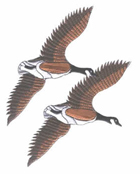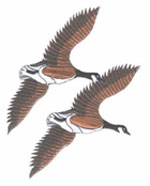The Corps of Her Majesty's Royal Marines, commonly just referred to as the Royal Marines (RM), are the marine corps and amphibious infantry of the United Kingdom and, along with the Royal Navy and Royal Fleet Auxiliary, form the Naval Service.
They are also the United Kingdom's specialists in amphibious warfare, including the operation of landing craft; mountain warfare; and Arctic warfare. A core component of the country's Rapid Deployment Force, the Corps's 3 Commando Brigade is capable of operating independently and is highly trained as a commando force. It is trained to deploy quickly and fight in any terrain. The Royal Marines have one of the longest basic infantry training courses in the world.
The Royal Marines have a regular manpower of 7,420 personnel. In addition the Royal Marines have a part time volunteer reserve force (RMR) of 970 personnel, giving a total of 8,390 Royal Marines. This makes the Royal Marines the largest force of its type in the European Union, and it is the only European force capable of carrying out amphibious operations at brigade level. The Royal Marines are the second largest force of its type in NATO, second only to the United States Marine Corps which numbers over 200,000 personnel.
The Royal Marines were formed as part of the Naval Service in 1755. However, it can trace its origins back as far as 28 October 1664, when English soldiers first went to sea to fight the Spanish and prevent them from reaching the fortress of Gibraltar. The Corps underwent a notable change after 1945 however, when the Royal Marines took on the main responsibility for the role and training of the British Commandos. The Royal Marines have an illustrious history, and since their creation in 1942 Royal Marines Commandos have engaged on active operations across the globe, every year, except 1968. Notably they were the first ever military unit to perform an air assault insertion by helicopter, during the Suez Crisis in 1956.
The Royal Marines are a maritime-focused, amphibious, highly specialised Light - medium force of commandos capable of deploying at short notice in support of the United Kingdom Government's military and diplomatic objectives overseas and are optimised for expeditionary warfare: operational situations requiring highly manoeuvreable, normally amphibious, forces. As the United Kingdom Armed Forces' specialists in cold weather warfare the Corps provide lead element expertise in the NATO Northern Flank and are optimised for high altitude operations, with jungle training still carried out when deployments allow.
In common with the other armed forces, the Royal Marines can provide resources for Military Aid to the Civil Community and Military Aid to the Civil Power operations and have done so.
Basic Training
The first weeks of training are spent learning basic skills that will be used later. This includes much time spent on the parade ground and on the rifle ranges. The long history of the Royal Marines is also highlighted through a visit to the Royal Marines Museum in Southsea, Hampshire. Physical training at this stage emphasizes all-round physical strength, endurance and flexibility in order to develop the muscles necessary to carry the heavy equipment a marine will use in an operational unit. Key milestones include a gym passout at week 9 (not carried out with fighting order), a battle swimming test, and learning to do a "regain" (i.e. climb back onto a rope suspended over a water tank). Most of these tests are completed wearing fighting order of 32 lb (14.5 kg) of Personal Load Carrying Equipment. Individual fieldcraft skills are also taught at this basic stage .
The Commando Course
The culmination of training is the Commando course. Following the Royal Marines taking on responsibility for the Commando role with the disbandment of the Army Commandos at the end of World War II, all Royal Marines, except those in the Royal Marines Band Service, complete the Commando course as part of their training (see below). Key aspects of the course include climbing and ropework techniques, patrolling, and amphibious warfare operations.
This intense phase ends with a series of tests which have remained virtually unchanged since World War II. Again, these tests are done in full fighting order of 32 lb (14.5 kg) of equipment.
The Commando Tests are taken on consecutive days and all four tests must be successfully completed within a seven day period; they include;
A Nine Mile (14.5 km) speed march, carrying full fighting order, to be completed in 90 minutes; the pace is thus 10 minutes per mile (9.6 KM/h or 6 mph).
The Endurance Course is a six mile (9.65 km) course across rough moorland and woodland terrain at Woodbury Common near Lympstone, which includes tunnels, pipes, wading pools, and an underwater culvert. The course ends with a four mile (6 km) run back to CTCRM. Followed by a marksmanship test, where the recruit must hit 6 out of 10 shots at a 25m target simulating 200 m. To be completed in 73 minutes (71 minutes for Royal Marine officers). Originally 72 minutes, these times were recently increased by one minute as the route of the course was altered.
The Tarzan Assault Course. This is an assault course combined with an aerial confidence test. It starts with a death slide (now known as The Commando Slide) and ends with a rope climb up a thirty foot near-vertical wall. It must be completed with full fighting order in 13 minutes, 12 minutes for officers. The Potential Officers Course also includes confidence tests from the Tarzan Assault Course, although not with equipment.
The 30 Miler. This is a 30-mile (48-km) march across upland Dartmoor, wearing full fighting order, and additional safety equipment carried by the recruit in a daysack. It must be completed in eight hours for recruits and seven hours for Royal Marine officers, who must also navigate the route themselves, rather than following a DS (a trained Royal Marine) with the rest of a syndicate and carry their own equipment.
After the 30-mile (48 km) march, any who failed any of the tests may attempt to retake them up until the seven day window expires. If a recruit fails two or more of the tests, however, it is unlikely that a chance to re-attempt them will be offered.
Normally the seven day schedule for the Commando Tests is as follows:
Saturday - Endurance Course
Sunday - Rest
Monday - Nine Mile Speed March
Tuesday - Tarzan Assault Course
Wednesday - 30 Miler
Thursday - Failed test re-runs
Friday - Failed test re-runs
Completing the Commando course successfully entitles the recruit or officer to wear the green beret but does not mean that the Royal Marine has finished his training. That decision will be made by the troop or batch training team and will depend on the recruit's or young officer's overall performance. Furthermore, officer training still consists of many more months.
Training to be a Royal Marine takes 32 weeks. The last week is spent mainly on administration and preparing for the pass out parade. Recruits in their final week of training are known as the King's Squad and have their own section of the recruits' galley at Lympstone.
After basic and commando training, a Royal Marine Commando will normally join a unit of 3 Commando Brigade. There are three Royal Marines Commando infantry units in the Brigade: 40 Commando located at Norton Manor Camp near Taunton in Somerset, 42 Commando at Bickleigh Barracks, near Plymouth, Devon, and 45 Commando at RM Condor, Arbroath on the coast of Angus.
Non-Royal Marine volunteers for Commando training undertake the All Arms Commando Course.
There is also a Reserve Commando Course run for members of the Royal Marines Reserve and Commando units of the Territorial Army.
Source
wikipedia.org/
Articles and web sites of interest



